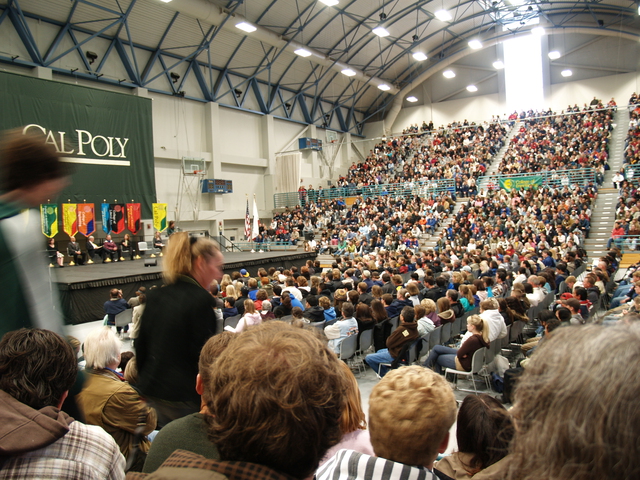Introduction
California Polytechnic State University (Cal Poly) in San Luis Obispo is a large public university with 6 colleges, 6 teaching certificates, 70 undergraduate programs, and 26 graduate programs. The school was founded in 1903 as a polytechnic high school and grew until 1933, when the California Board of Education transformed it into a two year technical and vocational school. Bachelor’s degrees were first offered in 1940, then Master’s degrees in 1949.
San Luis Obispo, a small city of about 44,000 residents, is almost halfway between San Francisco and Los Angeles, just 10 miles inland from the Pacific Ocean. The area is surrounded by agricultural lands, valleys, and mountains. The campus includes 9,678 acres in total across several different land holdings, and a 3,200 acre ranch which serves as an outdoor classroom for livestock and forestry education. There are roughly 17,000 students enrolled in any given year, although the university is planning to increase enrollment to 20,000 students by the year 2020.




